Raise your hand if adventuring in the winter months can feel like too much work. No, really! Even as a self-proclaimed outdoor enthusiast sometimes the thought of layering up to go on a hike during the chilliest months of the year has me snuggling even deeper under the covers and hitting snooze for the third time in a row.
The key though?
Packing your bag the night before, insanely strong coffee, and knowing that these five National Forests are even more beautiful in the winter season.
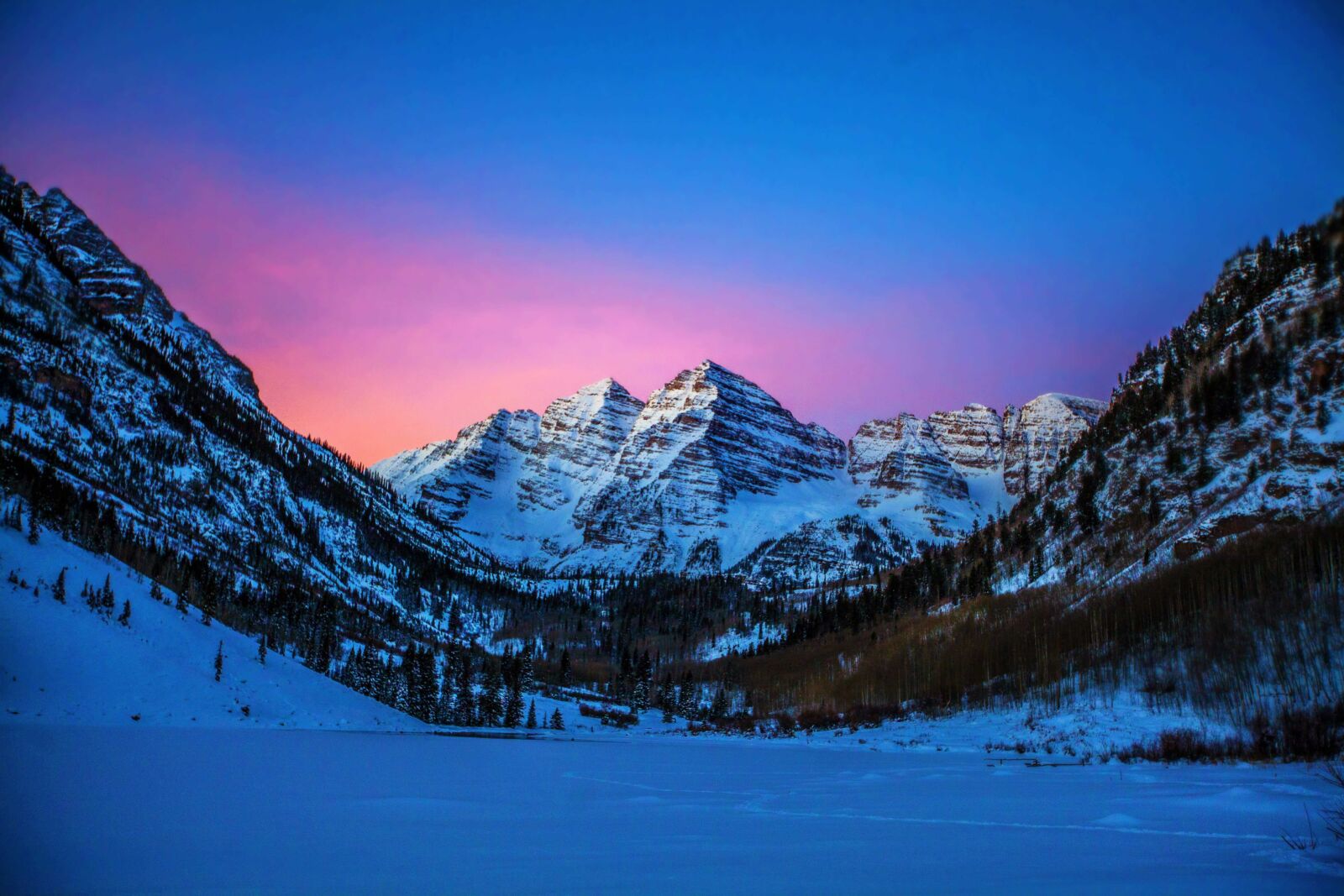
Photo Matt Hobbs.
White River National Forest
White River National Forest currently receives more than 10 million visitors per year. Covering 2.3 million acres in the heart of the Colorado Rockies this National Forest is home to iconic destinations such as Maroon Bells and Hanging Lake. While this National Forest tends to be a hotspot for some of the best backpacking trails in the summer, what you didn’t know is that it is even more magical in the winter season. White River National Forest is home to 11 ski resorts, so, strap in and hit the slopes to see parts of the forest you wouldn’t see in the summer months!
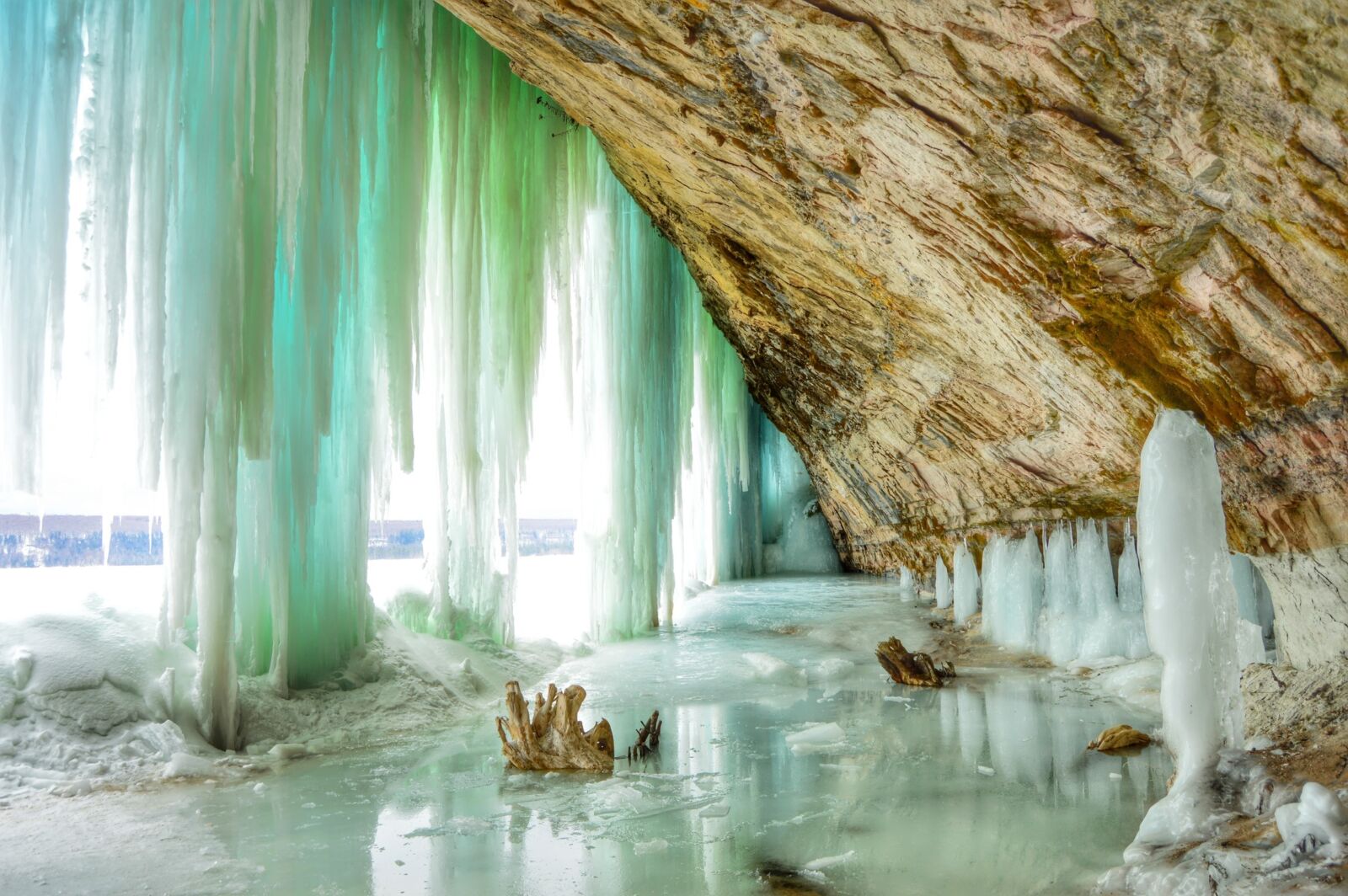
Photo by Chelsea Murawski.
Hiawatha National Forest
Year-round this National Forest boasts dramatic shoreline cliffs and classic lighthouses, but Hiawatha is home to a seasonal winter treat known as the Eben Ice caves. While not technically caves, ice stalactites have formed underneath the bedrock creating massive walls of ice which you can walk alongside and admire. To see this winter trail you need to plan accordingly and check weather conditions as the hike to this unique location requires traction in the winter months.
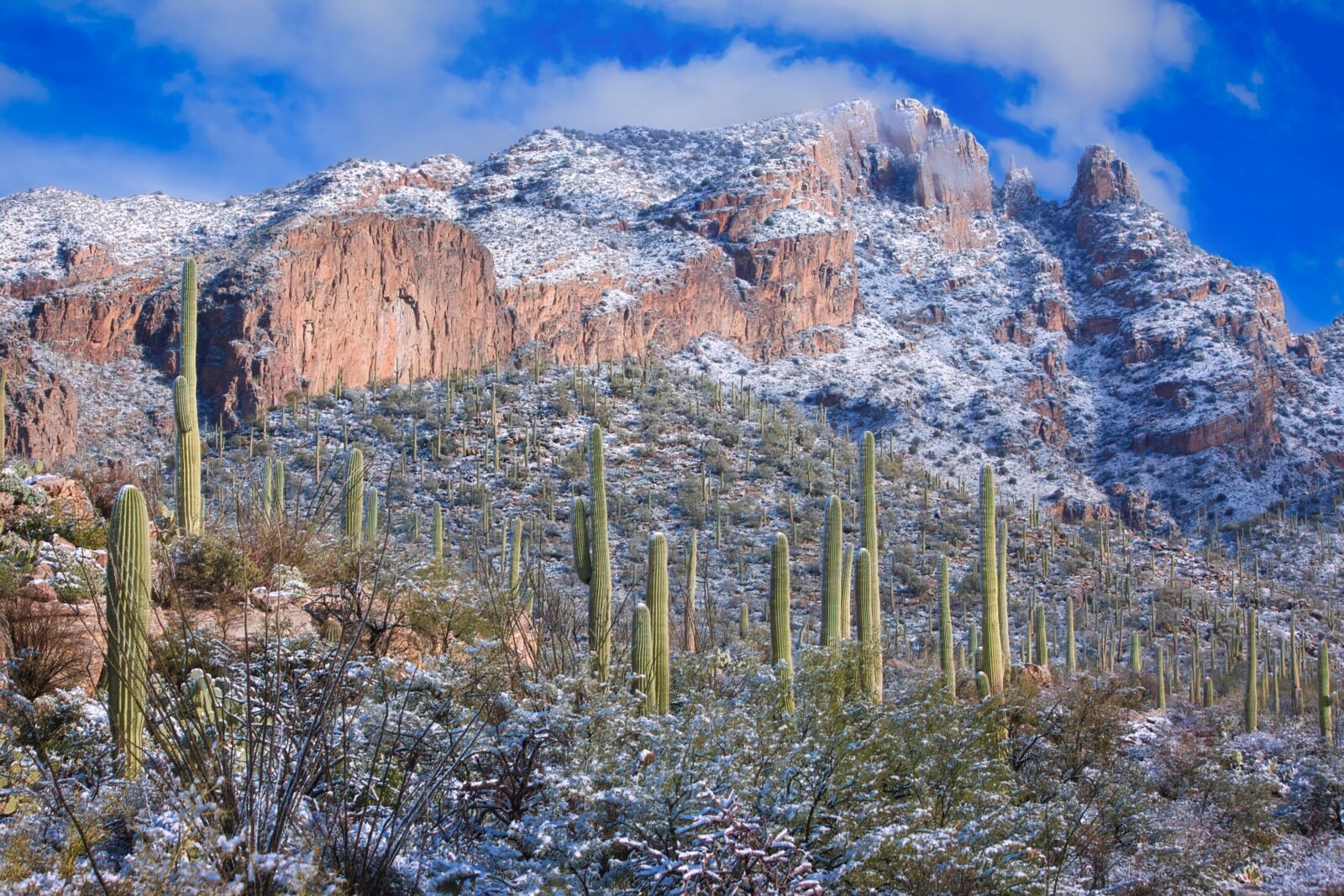
Photo by Rick Williams.
Coronado National Forest
Have you heard of Sky Islands? Sky islands are isolated mountain ranges in southeastern Arizona and northern Mexico. These mountains rise over 6,000 feet above the surrounding desert floor creating a stark contrast between the lowlands and high peaks. The extreme elevation and habitat variations of these geological variations result in a greater diversity of plants, and wildlife. When visiting Coronado National Forest, you can experience all four seasons during a single day’s journey! From hiking amongst desert giants like the saguaro cactus to playing in the snow in the mountains, Coronado is one of the most biologically diverse National Forests in the nation.
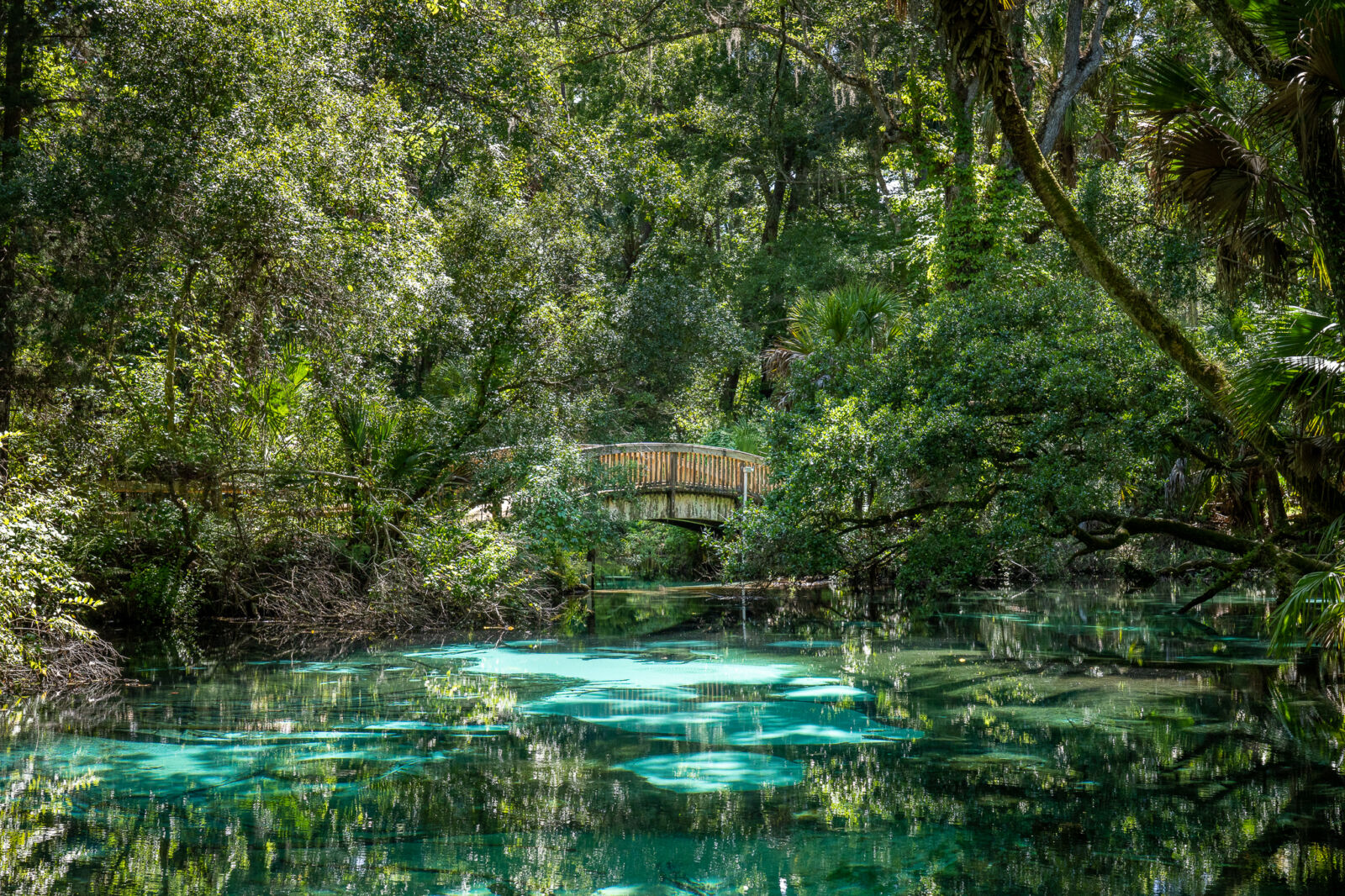
Photo by Amber Favorite.
Ocala National Forest
Somewhere around March, I begin to tire of my handy snowshoes. The thought of trudging through a snowbank feels way less exciting in spring than it does in December. If you also find yourself wishing for sun, Ocala National Forest is just the spot for you! President Theodore Roosevelt proclaimed Ocala National Forest in 1908 making it the oldest National Forest in Florida. With over 600 lakes and rivers that boast crystal blue water this National Forest is a secret oasis. So pack a bathing suit, bring some sunscreen, and make your way to the tropics this winter to visit Ocala National Forest.
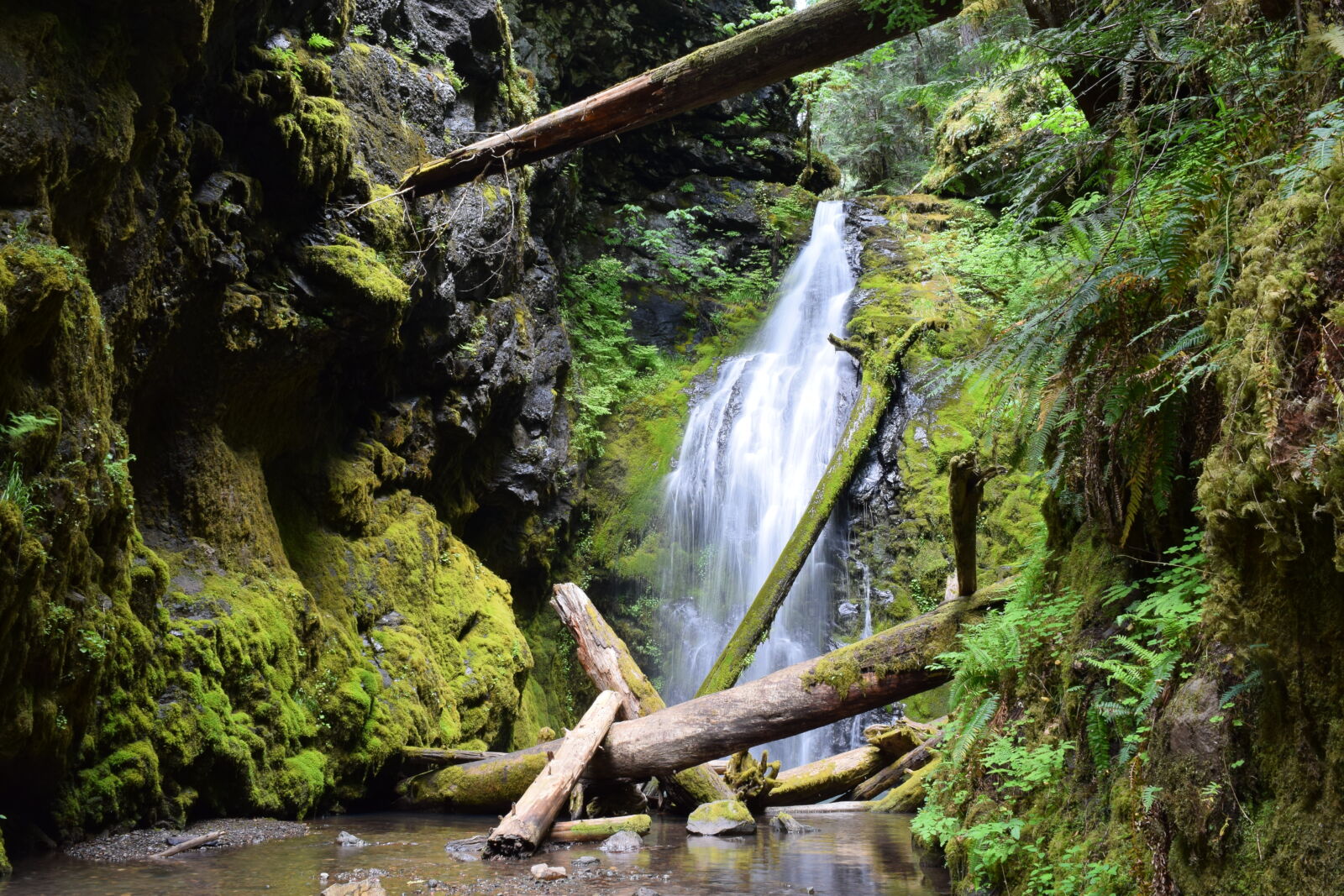
Photo by the U.S. Forest Service.
Umpqua National Forest
Where can you find cascading waterfalls views even in the winter season? You guessed it! Umpqua National Forest is nestled on the western slopes of the Cascade Mountains and is home to plenty of waterfalls, wildlife and so much more. During the winter season, Umpqua National Forest becomes an idyllic winter wonderland complete with snow-covered trees, and icicles. Bundle up and head out to explore the over 530 miles of beautiful trails and when you are done you can warm up at Umpqua Hot springs. Please plan accordingly as the gates leading up to the hot springs are likely closed for the winter months which will result in needing to hike up to the springs.
--------
As you’ve just read, the National Forest System is large and varied. Your unrestricted support enables the National Forest Foundation to work across the entire National Forest System so we can apply funds to the highest priority projects. Please consider making a general gift today to support this critical work by clicking here. Thank you!

